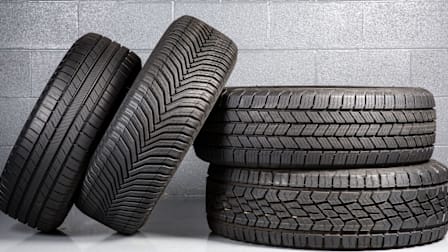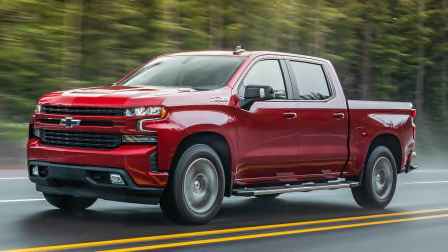Load index: This number is based on the weight the tire can safely carry. You’ll find it after the tire size; the 103 load index for most of the tires we’ve recently tested correlates to 1,929 pounds. Choose tires with a load index at least as high as the one that’s listed on your vehicle’s placard or owner’s manual.
Speed rating: This letter denotes the maximum sustainable speed and is found directly after the load index. For S-speed-rated tires, it’s 112 mph; for T, 118 mph. Speed ratings for other tires include Q, 99 mph; H, 130 mph; V, 149 mph; W, 168 mph; Y, 186 mph; and ZR, more than 149 mph. While such speeds may seem wildly impractical, tires with higher speed ratings tend to provide better handling at legal speed limits. Choose tires that have a speed rating at least as high as the one specified on your vehicle’s placard.
Treadwear rating: Grades for our light-truck tires ranged from 500 to over 800. In theory, a tire graded 400 should last twice as long as one graded 200. But the tire makers certify that the tires meet the wear ratings. The better gauge is to refer to our tread life predictions on the tire model pages, based on our extensive testing.
Traction and temperature scores: These scores denote a tire’s wet-stopping ability and temperature resistance. For traction, AA is best and C is worst. For temperature resistance, scores range from A (best) to C.
Maximum pressure: This is a tire’s maximum safe air pressure, given in pounds per square inch. But that doesn’t mean you should inflate your tires to that pressure, because automakers typically recommend an inflation pressure well below the tire’s maximum air pressure. Follow the advice on the vehicle’s placard.
When the tire was made: Every tire has a Department of Transportation (DOT) number after the letters on the sidewall. The last four digits determine the week and year the tire was made; for example, the digits 0424 would signify that the tire was made during the 4th week of 2024. Don’t buy tires more than a couple of years old. Beyond wearing out, tires can age out. Some automobile makers recommend replacing tires at six years, but if there is no recommendation, we recommend replacement at 10 years, as some tire makers suggest.


































